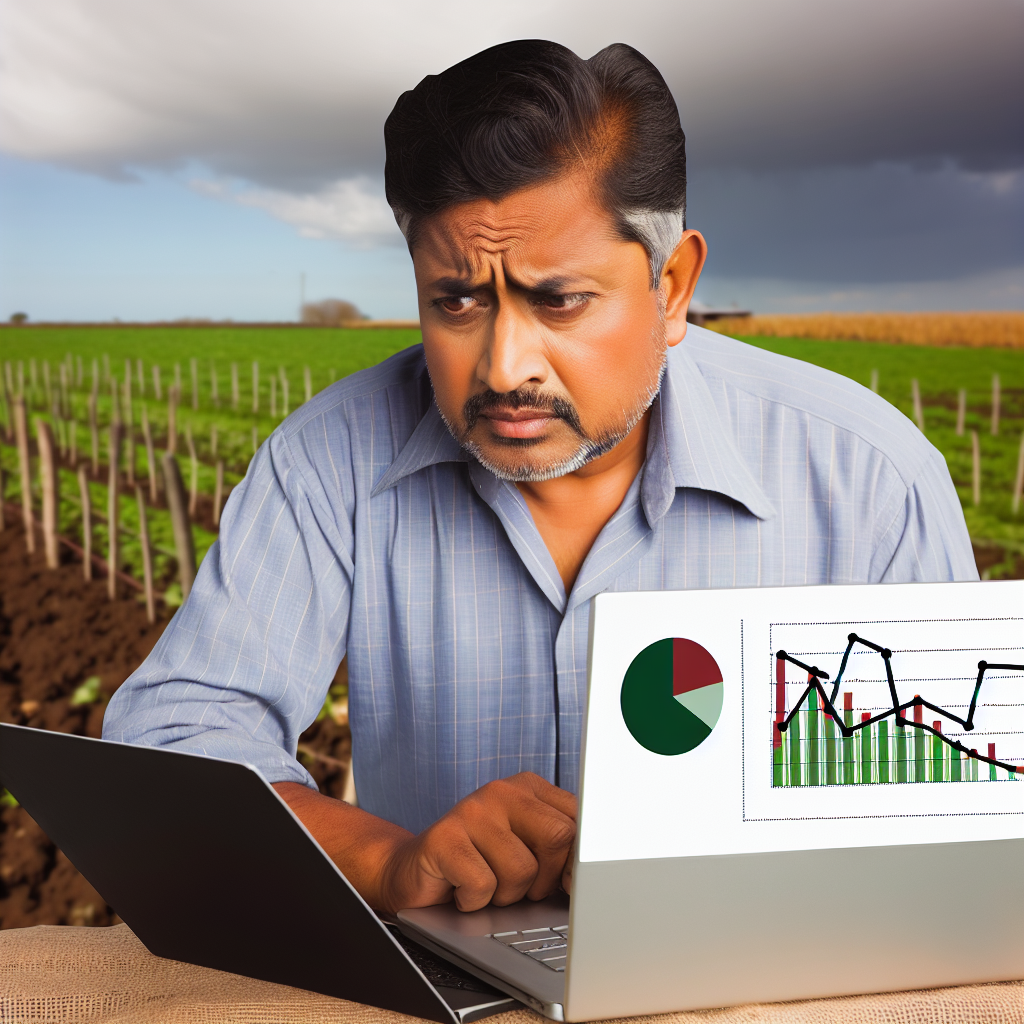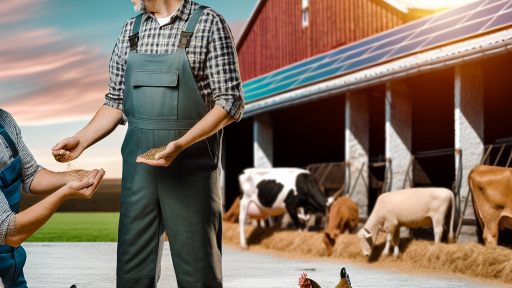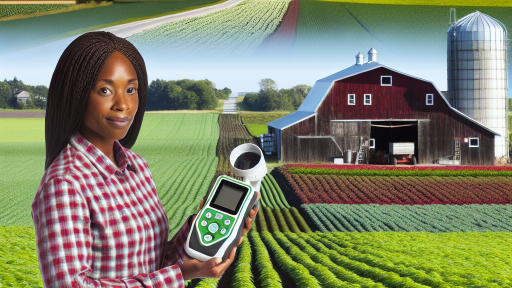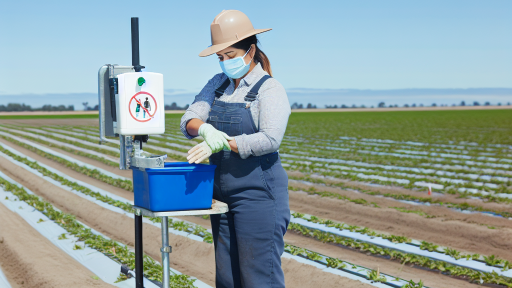Introduction to Climate Change and its Impact on Agriculture
Climate change creates profound challenges for modern agriculture.
It alters weather patterns, affecting rainfall and temperatures.
Farmers face increased risk from extreme weather events.
Crop yields become unpredictable, which impacts food security.
Additionally, pests and diseases can thrive in new conditions.
Shifting Weather Conditions
Unexpected weather patterns disrupt traditional growing seasons.
Droughts may become more frequent, damaging crops and livelihoods.
Conversely, excessive rainfall can lead to flooding and soil erosion.
Farmers must adapt to these changes to maintain productivity.
Environmental Stressors on Soil and Water
Soil health becomes a greater concern amid changing climates.
Higher temperatures can lead to soil degradation and reduced fertility.
Water scarcity poses a significant challenge for irrigation-dependent agriculture.
Proper management practices become crucial for sustaining resources.
Implications for Livestock
Livestock production also feels the impact of climate change.
Heat stress can affect animal health and productivity.
Transform Your Agribusiness
Unlock your farm's potential with expert advice tailored to your needs. Get actionable steps that drive real results.
Get StartedChanges in feed availability may raise costs for farmers.
Adaptation strategies are necessary to mitigate these effects.
Regulatory and Policy Responses
Governments worldwide are implementing climate-related policies.
These regulations aim to guide farmers in sustainable practices.
Farmers must stay informed about these changing laws.
Compliance can provide both challenges and opportunities for growth.
Overview of Current Climate Change Laws Affecting Farmers
Introduction to Climate Change Legislation
Climate change laws significantly impact modern farming practices.
These regulations aim to reduce greenhouse gas emissions.
They also promote sustainable agricultural techniques.
Key Legislation Influencing Agriculture
The Climate Act of 2021 sets ambitious emission reduction targets.
It includes measures specific to the agricultural sector.
Farmers must adapt to comply with these regulations.
Cap-and-Trade Programs
Cap-and-trade programs impose limits on emissions.
Farmers can buy or sell emission allowances.
This creates a financial incentive to reduce emissions.
Incentives for Sustainable Practices
Federal and state incentives support sustainable farming.
Programs like the Environmental Quality Incentives Program provide funding.
Farmers can receive financial assistance for eco-friendly practices.
Impacts on Crop Production
Climate change laws may influence crop yields.
Farmers might need to adjust planting schedules.
Additionally, they may explore drought-resistant crop varieties.
Compliance and Reporting Requirements
Farmers must keep accurate records for compliance.
Reporting emissions and sustainability practices is essential.
Failing to comply could result in penalties.
Showcase Your Farming Business
Publish your professional farming services profile on our blog for a one-time fee of $200 and reach a dedicated audience of farmers and agribusiness owners.
Publish Your ProfileFuture Trends in Climate Legislation
Expect more stringent regulations in the coming years.
Farmers will need to stay informed about upcoming laws.
Adaptation and innovation in farming practices will become crucial.
Understanding the Importance of Compliance with Environmental Regulations
Protecting the Environment
Farmers play a crucial role in protecting the environment.
Compliance with environmental regulations helps preserve ecosystems.
By following these regulations, farmers reduce their environmental impact.
Additionally, this commitment enhances biodiversity on their farms.
Legal and Financial Implications
Understanding compliance is essential for avoiding legal issues.
Violations can lead to significant fines and penalties.
Investing in compliance can save farmers money in the long run.
Furthermore, it prevents costly legal battles and disruptions in operations.
Accessing Government Support
Compliance with regulations can open doors to government programs.
Farmers may access grants or financial assistance for sustainable practices.
These programs often require adherence to specific environmental standards.
Thus, staying compliant can be beneficial for funding and support.
Improving Market Competitiveness
Consumers increasingly prefer environmentally friendly products.
Compliance can enhance a farm’s marketability and appeal.
Many retailers prioritize vendors who follow sustainable practices.
As a result, compliance can give farmers a competitive edge.
Building Community Relations
Active compliance fosters positive community relationships.
Farmers demonstrating environmental responsibility gain community trust.
Engagement with local stakeholders can lead to collaboration opportunities.
Furthermore, it strengthens the overall agricultural community.
See Related Content: How To Apply For Agricultural Conservation Programs
Key Federal and State Legislation Governing Climate Action
Overview of Climate Change Legislation
Climate change legislation aims to mitigate environmental impact.
Lawmakers at both federal and state levels push for regulations.
These laws help modern farmers adapt to changing circumstances.
Federal Legislation
Several key federal laws govern climate action in agriculture.
The Clean Air Act is one of the most significant regulations.
It aims to control air pollution from a variety of sources.
Farmers must understand how these regulations affect operations.
Greenhouse Gas Reporting Rule
The Greenhouse Gas Reporting Rule applies to large emitters.
It requires specific reporting of greenhouse gas emissions.
Farmers with significant emissions must comply adequately.
Farm Bill Provisions
The Farm Bill addresses food production and environmental conservation.
It includes funding for research and grants for sustainable practices.
Farmers can benefit from programs that incentivize climate-friendly methods.
State Legislation
Many states have implemented their climate change policies.
Legislation frequently aims at reducing greenhouse gas emissions.
Farmers should be aware of local regulations impacting their practices.
Showcase Your Farming Business
Publish your professional farming services profile on our blog for a one-time fee of $200 and reach a dedicated audience of farmers and agribusiness owners.
Publish Your ProfileExample of State Initiatives
California has led in climate action laws for agriculture.
The state offers grant programs to support sustainable practices.
Farmers can participate in initiatives to improve resilience.
Regulatory Compliance
Each state has unique compliance requirements for agriculture.
Understanding these regulations is crucial for farmers.
Failure to comply can lead to penalties and increased costs.
Future Directions in Climate Legislation
Anticipated legislation will likely focus on sustainability.
Farmers should prepare for new compliance measures and standards.
Further incentives for sustainable practices may emerge.
Staying informed about legal changes is essential for success.
Delve into the Subject: Compliance Strategies for Farm-To-Table Legislation in Modern Farming
The Role of Carbon Credits and Trading in Agriculture
Introduction to Carbon Credits
Carbon credits represent a financial instrument aimed at reducing greenhouse gas emissions.
They allow farmers to sell credits for carbon offsets generated by sustainable practices.
This creates an economic incentive to adopt environmentally friendly methods.
How Carbon Trading Works
Carbon trading involves buying and selling carbon credits between entities.
Farmers can earn credits by reducing emissions through practices like reforestation.
These credits can then be sold to businesses seeking to offset their emissions.
Benefits for Farmers
Engaging in carbon trading can lead to additional revenue streams for farmers.
Farmers can enhance their sustainability efforts while improving their bottom line.
Moreover, these practices can increase land productivity over time.
Challenges in Carbon Trading
Despite its benefits, carbon trading poses challenges for farmers.
The complexity of tracking and verifying carbon credits can be daunting.
Additionally, market prices for carbon credits can fluctuate significantly.
Steps for Participation
Farmers can take several steps to engage in carbon credit trading.
- Assess current farming practices to identify potential carbon-saving measures.
- Consult with carbon credit programs for eligibility and guidelines.
- Implement sustainable practices that enhance carbon sequestration.
- Register for a carbon credit exchange to start trading.
Future Directions of Carbon Credits in Agriculture
Carbon credits and trading represent a promising avenue for modern agriculture.
As awareness grows, more farmers are likely to participate actively.
In turn, this can lead to significant environmental benefits and economic gains.
See Related Content: Comprehensive Guide to Rural Development Policies for Farmers
Best Practices for Sustainable Farming Under Climate Legislation
Understanding Sustainable Farming
Sustainable farming practices reduce environmental impact significantly.
They focus on maintaining ecological balance across farms.
Farmers can use methods that promote soil health and biodiversity.
Implementing Regenerative Techniques
Regenerative agriculture enhances soil quality and carbon sequestration.
Practicing crop rotation improves soil structure and nutrient content.
Additionally, cover crops prevent erosion and improve water retention.
Farmers should also consider agroforestry systems for biodiversity enhancement.
Utilizing Precision Agriculture
Precision agriculture optimizes inputs for improved efficiency.
This method allows farmers to monitor crop health and soil conditions closely.
Using data analytics, farmers can reduce waste and enhance yields.
Additionally, it supports sustainable pest management practices.
Adopting Integrated Pest Management
Integrated pest management combines biological, cultural, and chemical practices.
Showcase Your Farming Business
Publish your professional farming services profile on our blog for a one-time fee of $200 and reach a dedicated audience of farmers and agribusiness owners.
Publish Your ProfileThis approach minimizes pesticide usage while maximizing crop protection.
Farmers can promote beneficial insects to control pest populations naturally.
Regular monitoring helps identify pest issues early, reducing damage.
Engaging with Climate-Smart Policies
Farmers should familiarize themselves with current climate policies.
Participating in government programs can provide incentives for sustainable practices.
Engagement with local agricultural extensions keeps farmers informed about best practices.
Networking with fellow farmers fosters innovation and collaboration in sustainability efforts.
Measuring and Reporting Progress
Farmers need to track their sustainability metrics consistently.
Using tools and software can facilitate monitoring of resources and yields.
Regularly assessing practices ensures compliance with climate regulations.
Transparency in reporting builds credibility with consumers and stakeholders.
Learn More: Understanding Import Export Tariffs And Their Impact On Farming

Navigating the Grant and Funding Opportunities for Farmers
Understanding Available Grants
Farmers can access various grants aimed at promoting sustainable practices.
Many grants focus on projects that enhance climate resilience.
It’s important for farmers to research local and federal grant options.
Organizations like the USDA offer numerous funding opportunities.
State agriculture departments may have specific grants tailored for local needs.
Identifying Funding Sources
Start by visiting government websites for information on available grants.
Additionally, nonprofit organizations provide funding for innovative agricultural projects.
Local cooperatives often have funding programs for sustainable practices.
Industry associations can also be valuable sources of funding information.
Application Process
Farmers should prepare a solid project proposal to apply for grants.
Detailing how a project aligns with grant goals can significantly increase chances of success.
Gather the required documentation early in the process.
Many grants require evidence of community engagement and impact.
It’s wise to review application guidelines thoroughly before submission.
Common Challenges
Farmers often face fierce competition for limited grant funds.
Understanding the specific criteria for each grant is crucial.
Additionally, incomplete applications may lead to disqualification.
Seeking assistance from grant writing experts can be beneficial.
Post-Award Considerations
Once awarded a grant, farmers must adhere to reporting requirements.
Provide regular updates on project progress and expenditures.
Maintaining clear and open communication with funding agencies is essential.
Completing projects on time and within budget strengthens future funding chances.
Case Studies of Farmers Adapting to Climate Change Laws
Innovative Practices in Crop Management
Farmers are embracing innovative practices to comply with climate change laws.
For instance, Emily Johnson utilizes crop rotation to enhance soil health.
This practice reduces the need for chemical fertilizers and pesticides.
Additionally, it helps in managing pests sustainably.
Moreover, her farm has shown a significant increase in biodiversity.
Water Conservation Techniques
Water management is crucial under new climate regulations.
Showcase Your Farming Business
Publish your professional farming services profile on our blog for a one-time fee of $200 and reach a dedicated audience of farmers and agribusiness owners.
Publish Your ProfileDavid Chen has implemented drip irrigation systems on his farm.
This system delivers water directly to plant roots efficiently.
Consequently, it reduces water wastage significantly.
His yields have improved while conserving precious water resources.
Utilizing Renewable Energy Sources
Many farmers are turning to renewable energy to meet legal requirements.
Susan Garcia has installed solar panels on her farm.
This setup powers her operations and decreases reliance on non-renewable energy.
Subsequently, her production costs have decreased.
Furthermore, her carbon footprint has significantly reduced.
Community Collaboration and Knowledge Sharing
Collaboration among farmers strengthens resilience to climate laws.
The Green Fields Cooperative in Missouri promotes knowledge sharing.
They host workshops on best practices related to climate change adaptation.
Farmers exchange insights and explore new techniques in these sessions.
This collaboration fosters a supportive network, enhancing overall compliance.
Financial Support and Incentives
Access to financial resources aids farmers in adapting to regulations.
The USDA provides grants for sustainable farming initiatives.
These funds help farmers like Tom Harris modernize their practices.
As a result, he can invest in eco-friendly equipment and technologies.
Financial incentives encourage farmers to adopt greener methods.
Future Trends in Climate Policies and their Implications for Farmers
Emerging Climate Legislation
Governments worldwide are adopting more stringent climate regulations.
This shift aims to reduce greenhouse gas emissions significantly.
Farmers must stay informed about these changes.
Proposed legislation includes enhanced reporting requirements.
Additionally, new taxes on carbon emissions are likely to emerge.
Compliance with these regulations will demand adjustments from farmers.
Sustainable Farming Practices
Sustainable practices will become essential for modern farmers.
These practices help mitigate climate change effects.
Farmers may adopt crop rotation and cover cropping techniques.
Additionally, integrating agroforestry can improve biodiversity.
Investment in renewable energy sources is also crucial.
Using solar panels or wind turbines can reduce operational costs.
Government Incentives and Support
Many governments are introducing incentives for sustainable farming.
Financial support can alleviate the costs of adopting eco-friendly practices.
Grants and subsidies will become more accessible to farmers.
Moreover, training programs will educate farmers on best practices.
Collaboration with agricultural organizations can enhance resource sharing.
Market Shifts and Consumer Demand
Consumer awareness of environmental issues continues to grow.
As a result, the demand for organic and sustainably grown food is increasing.
Farmers who embrace these trends can capture new market opportunities.
Adapting production methods will be vital to meet consumer preferences.
Showcase Your Farming Business
Publish your professional farming services profile on our blog for a one-time fee of $200 and reach a dedicated audience of farmers and agribusiness owners.
Publish Your ProfileFarmers should explore direct-to-consumer sales channels.
Thus, they can foster relationships with environmentally conscious consumers.
Technological Innovations
Technology will play a significant role in shaping future farming practices.
Precision agriculture tools will enhance efficiency and reduce waste.
Farmers can utilize drones and satellite imagery for monitoring crops.
Additionally, data analytics can inform sustainable decision-making.
Investing in innovative technologies will be integral to success.
Resilience and Adaptation Strategies
Farmers need to develop resilience against climate change impacts.
This includes adapting to unpredictable weather patterns.
Diverse cropping systems can reduce vulnerability to climate extremes.
Engaging in community dialogues will facilitate knowledge sharing.
Farmers should also assess their risk management strategies regularly.
Building resilience will ensure long-term productivity and sustainability.
Additional Resources
Farm & Commodity Policy | Economic Research Service
USDA Science and Research Strategy, 2023-2026: Cultivating …




